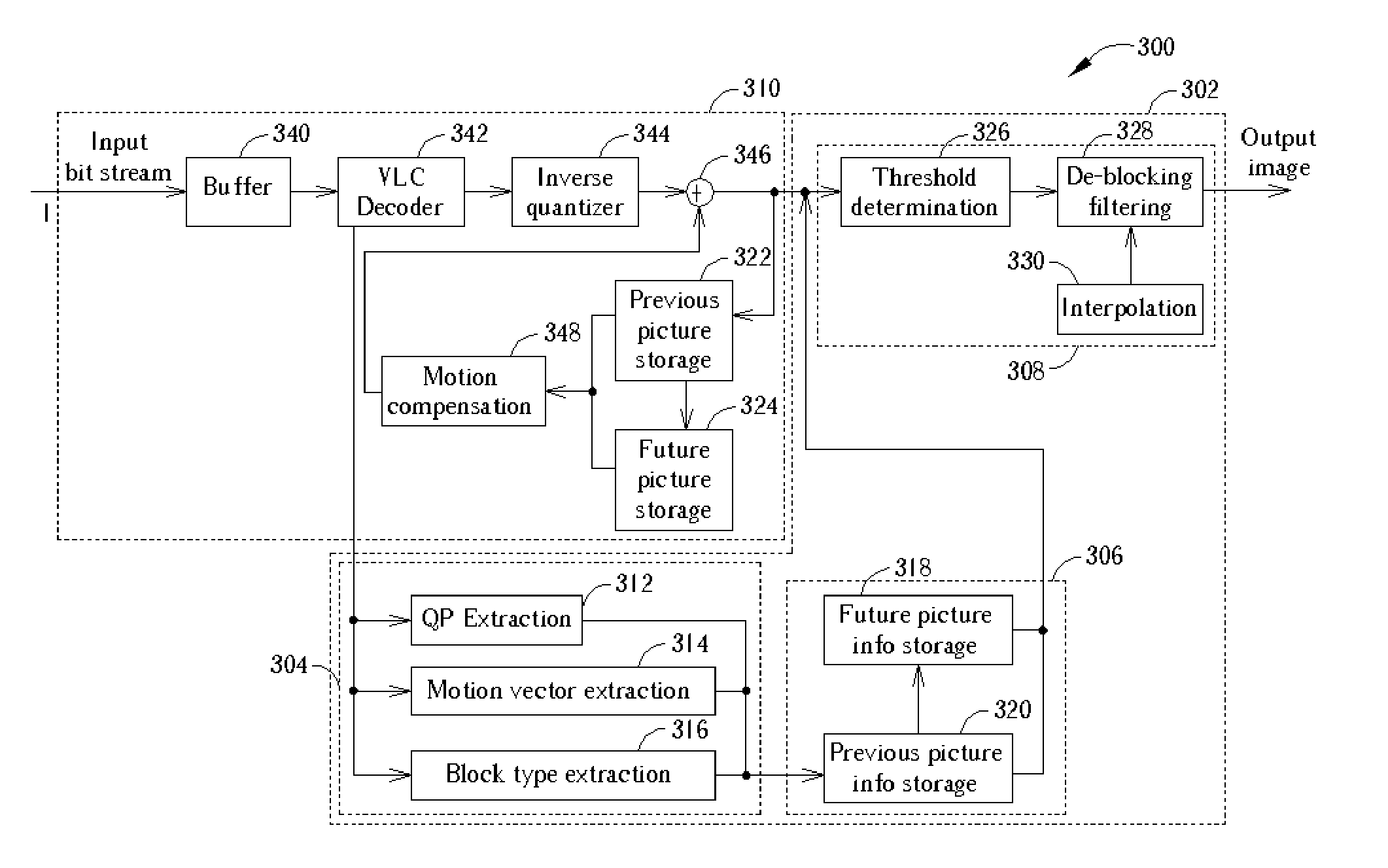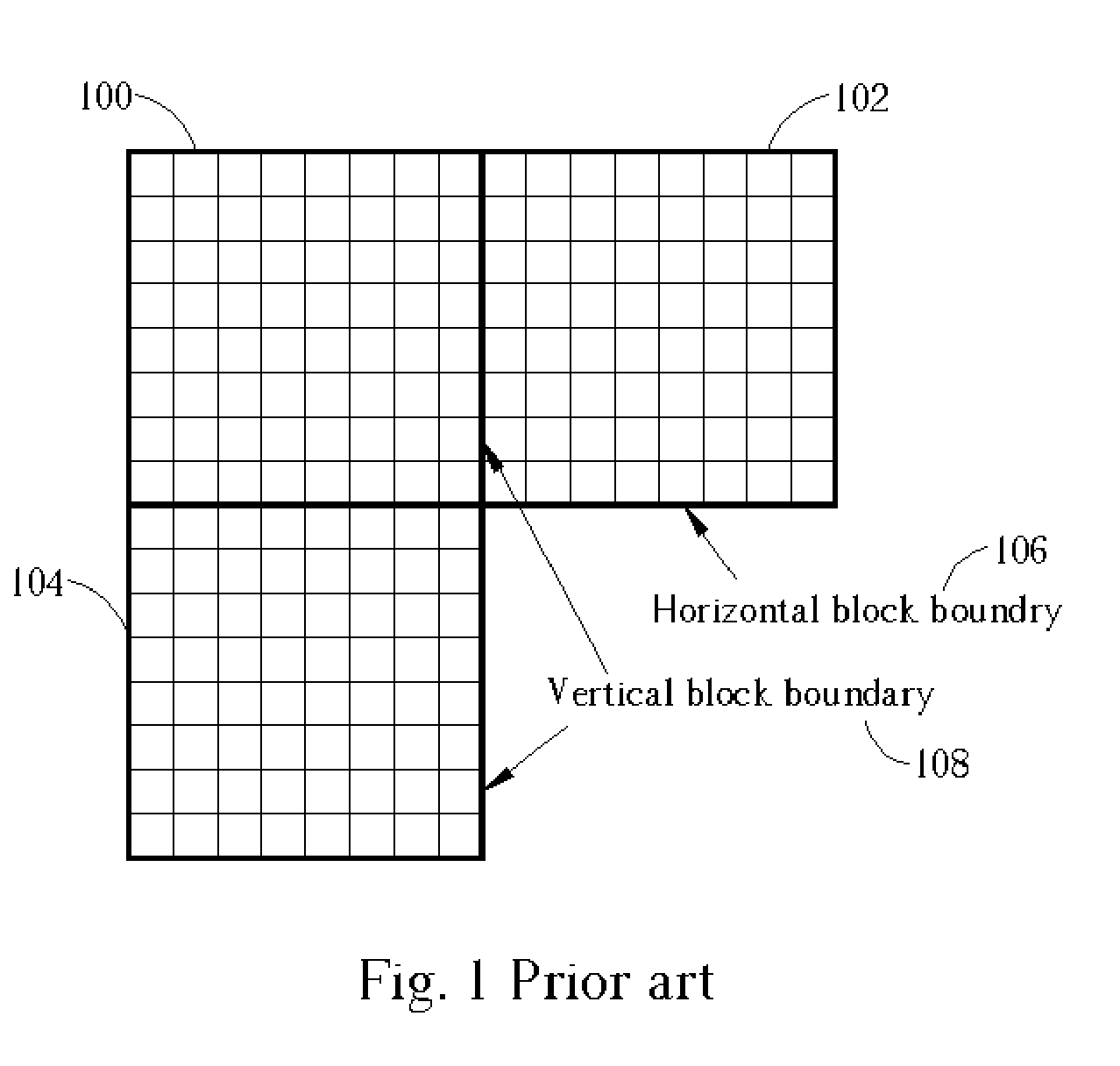Adaptive de-blocking filtering apparatus and method for MPEG video decoder
a filtering apparatus and video decoder technology, applied in the field of postprocessing of blockbased coded video, can solve the problems of difficult to reduce the blocking artifact with a small operation capacity, noticeable blocking artifacts, and serious problems of moving picture compression, and achieve the effect of low computational complexity
- Summary
- Abstract
- Description
- Claims
- Application Information
AI Technical Summary
Benefits of technology
Problems solved by technology
Method used
Image
Examples
Embodiment Construction
[0066]FIG. 3 is a block diagram showing a video decoder 300 incorporating a post-processing de-blocking device 302 according to the present invention. As described previously, when the de-blocking filter is integrated into a video decoder 300 as a post-processing de-blocking device 302, the post-processing de-blocking device 302 operates on decoded frames after the decoding loop. In the block diagram shown in FIG. 1, the post-processing de-blocking device 302 comprises three units: a picture-information extraction and buffering unit 304, a picture-information reordering unit 306, and a post-processing unit 308. The post-processing unit 308 is cascaded with a standard MPEG decoder 310 without changing the bit stream syntax of an input bit stream I. The standard MPEG decoder 310 receives the input bit stream I and includes a buffer 340, a variable length code (VLC) decoder 342, an inverse quantizer 344, a summing unit 346, a motion compensation unit 348, previous picture storage 322, ...
PUM
 Login to View More
Login to View More Abstract
Description
Claims
Application Information
 Login to View More
Login to View More - R&D
- Intellectual Property
- Life Sciences
- Materials
- Tech Scout
- Unparalleled Data Quality
- Higher Quality Content
- 60% Fewer Hallucinations
Browse by: Latest US Patents, China's latest patents, Technical Efficacy Thesaurus, Application Domain, Technology Topic, Popular Technical Reports.
© 2025 PatSnap. All rights reserved.Legal|Privacy policy|Modern Slavery Act Transparency Statement|Sitemap|About US| Contact US: help@patsnap.com



